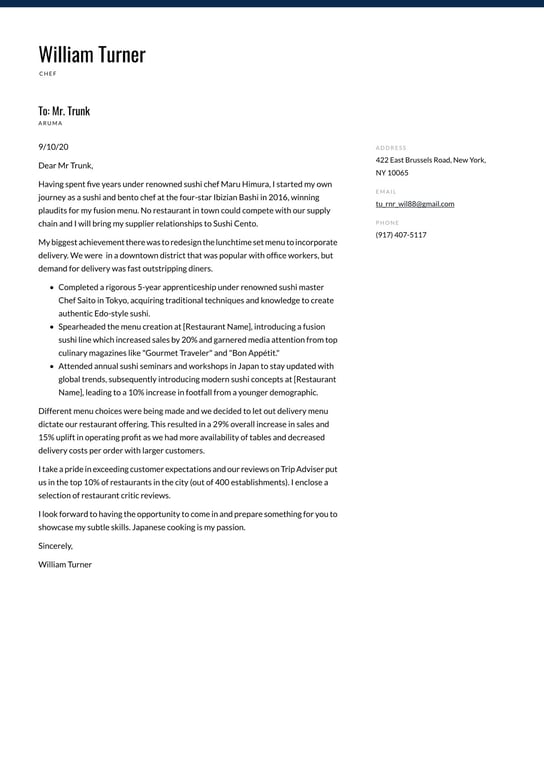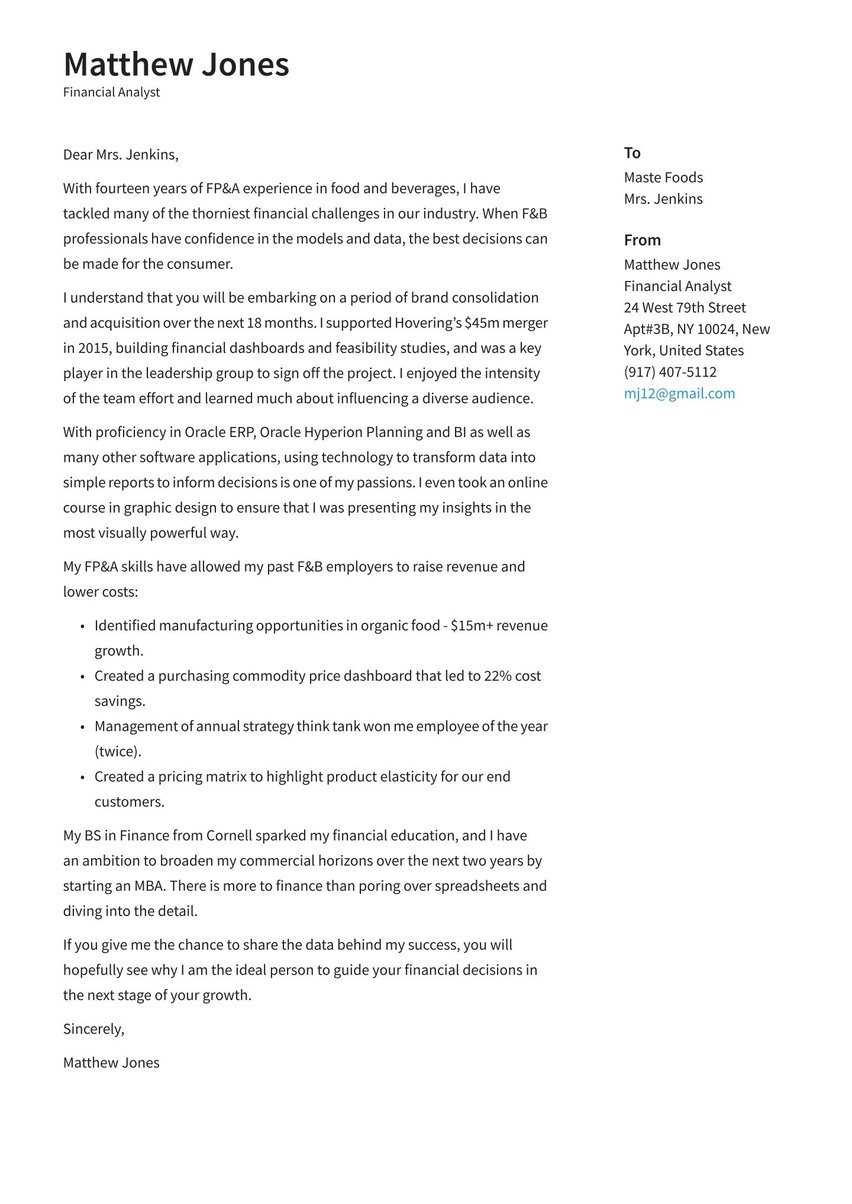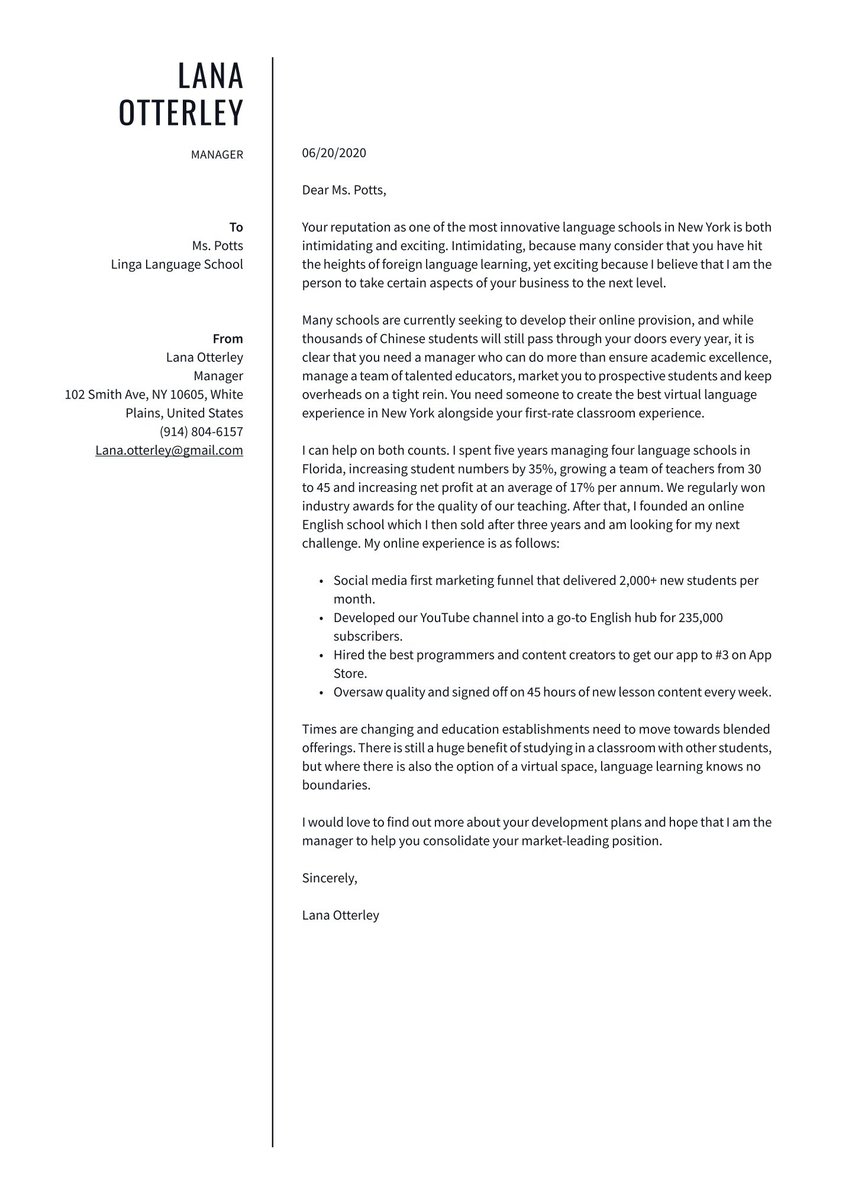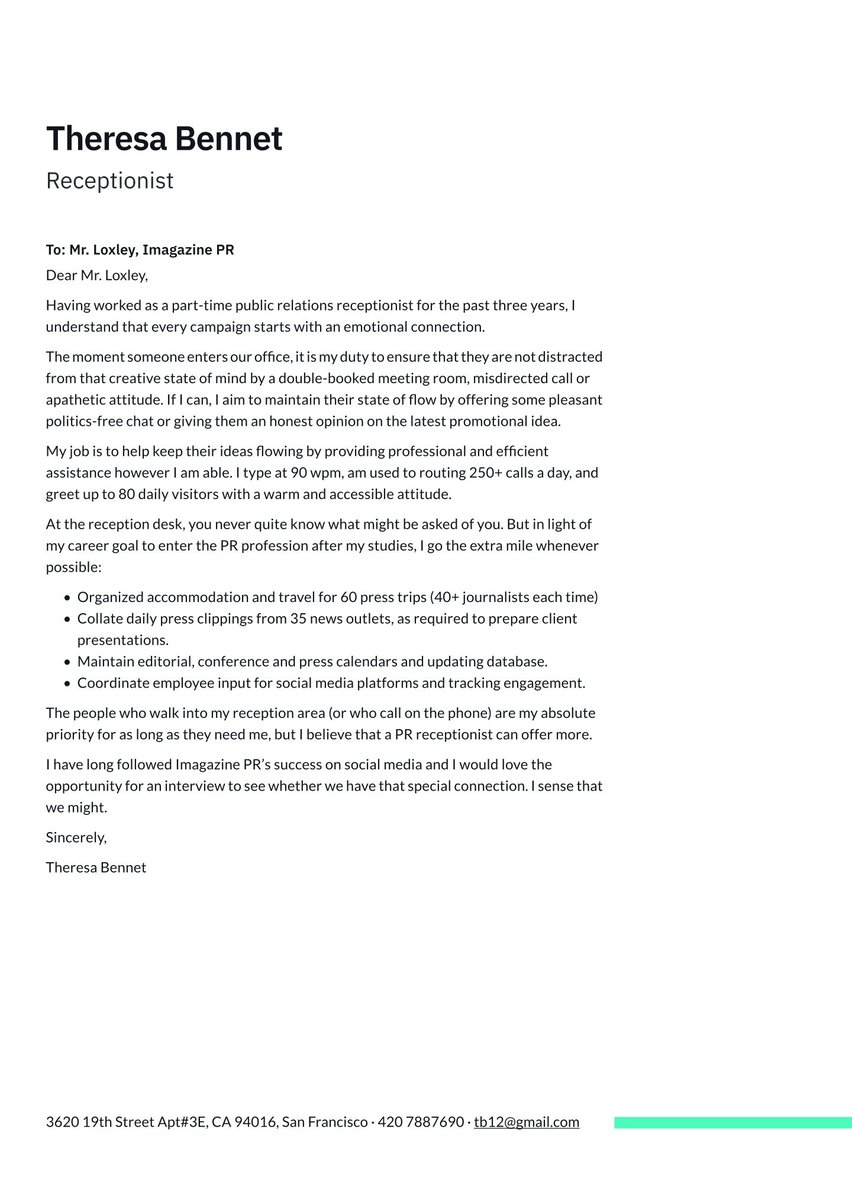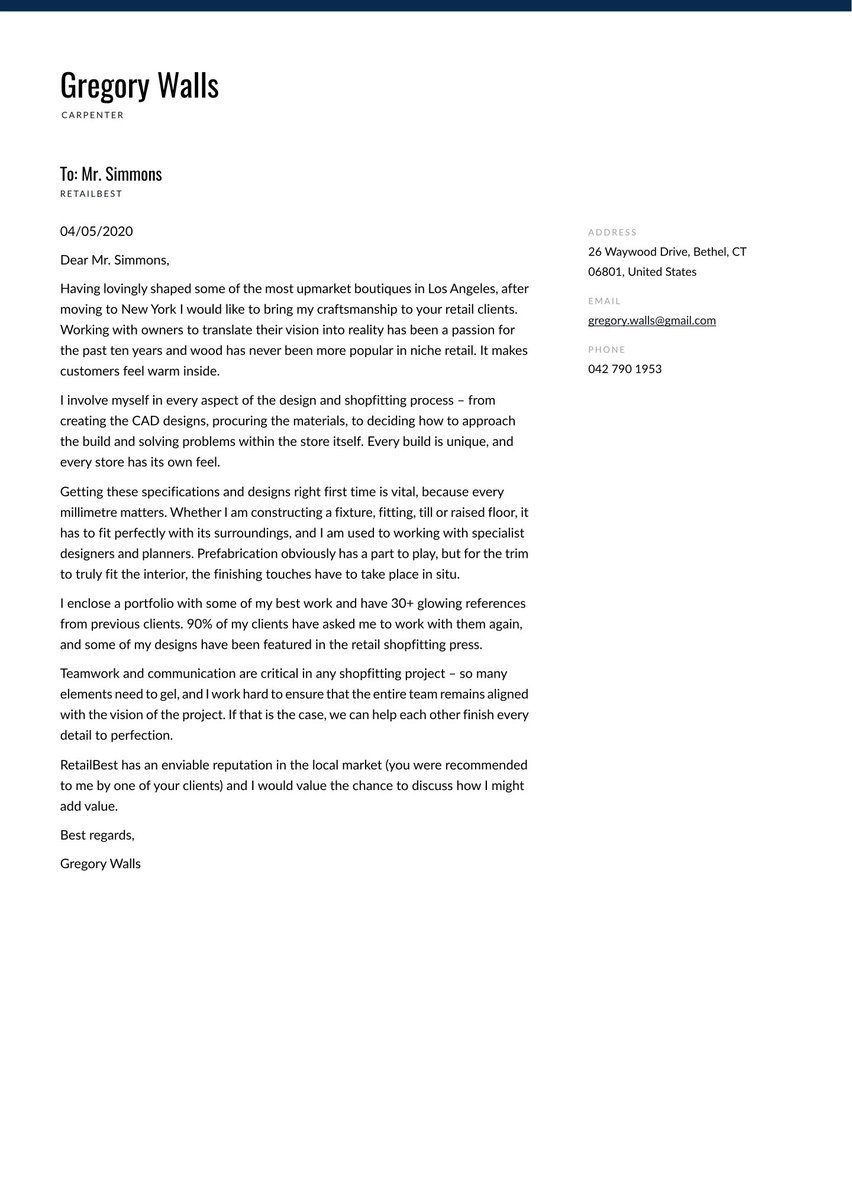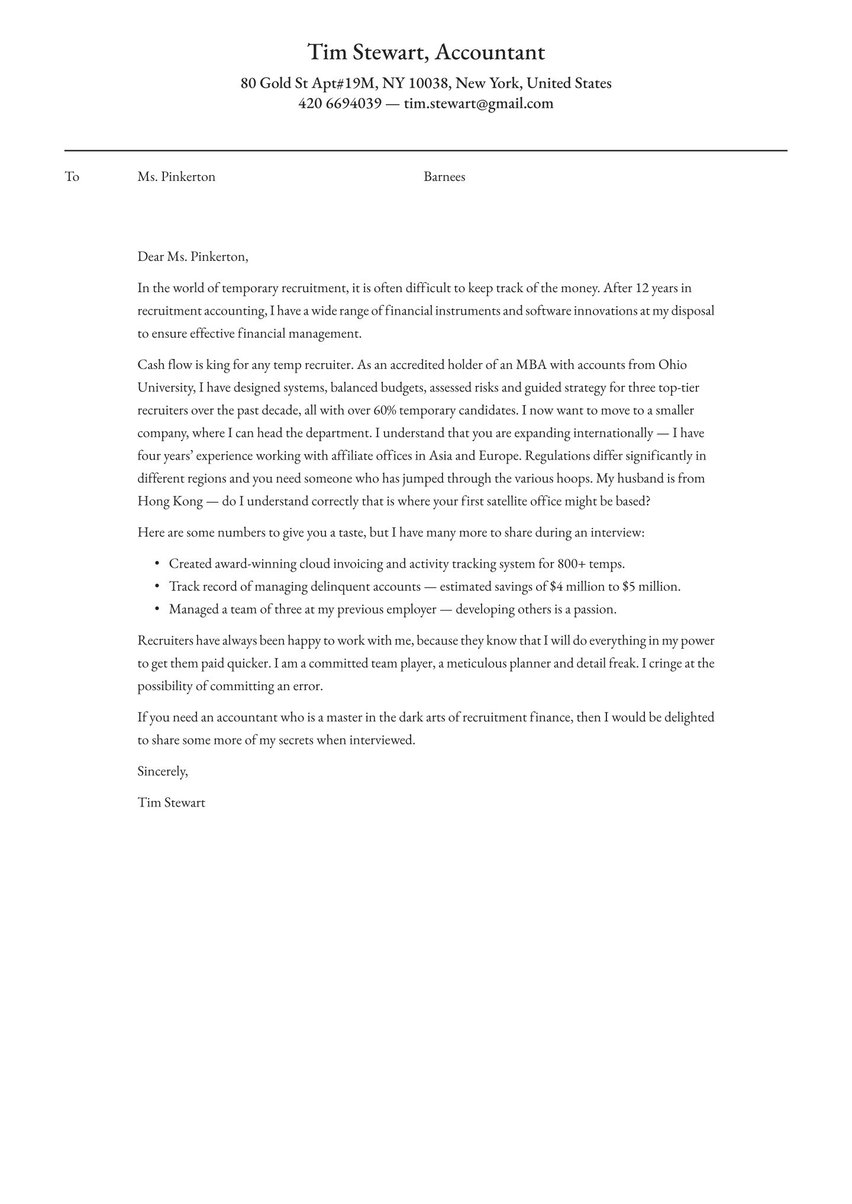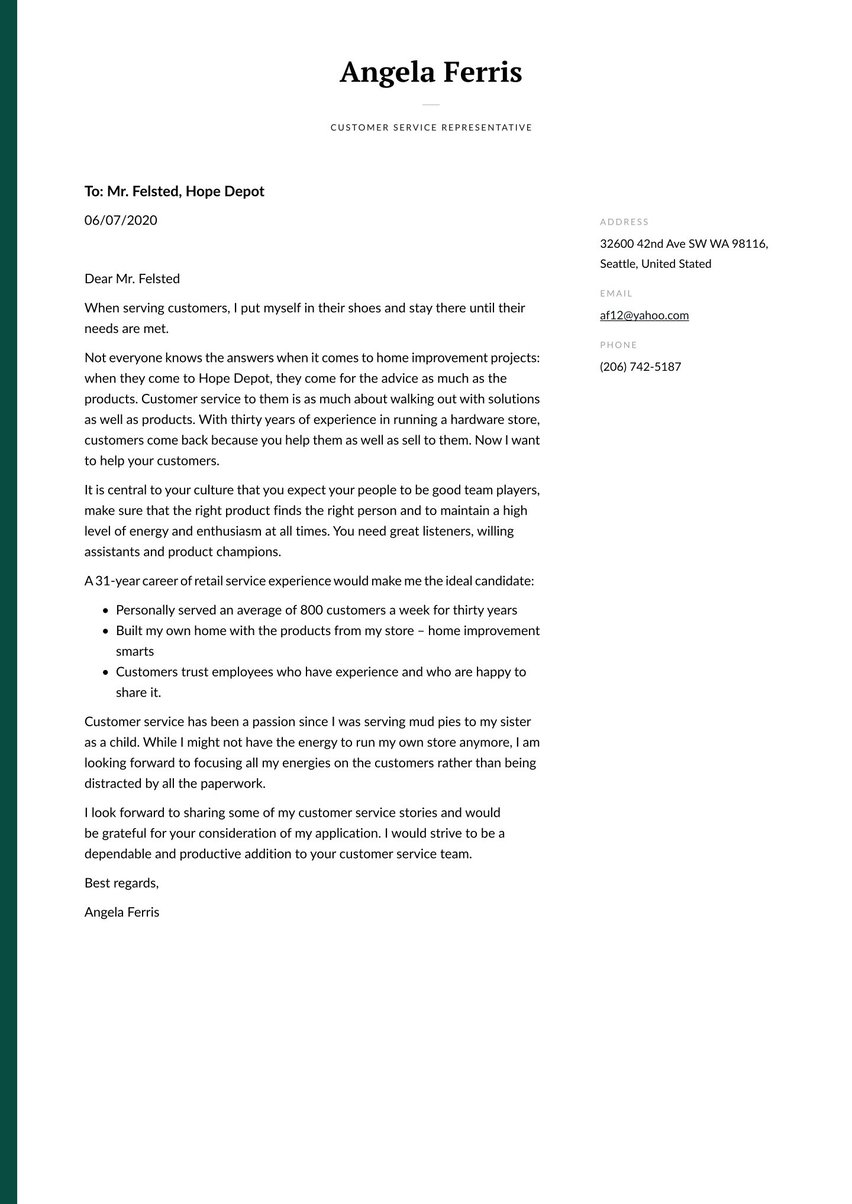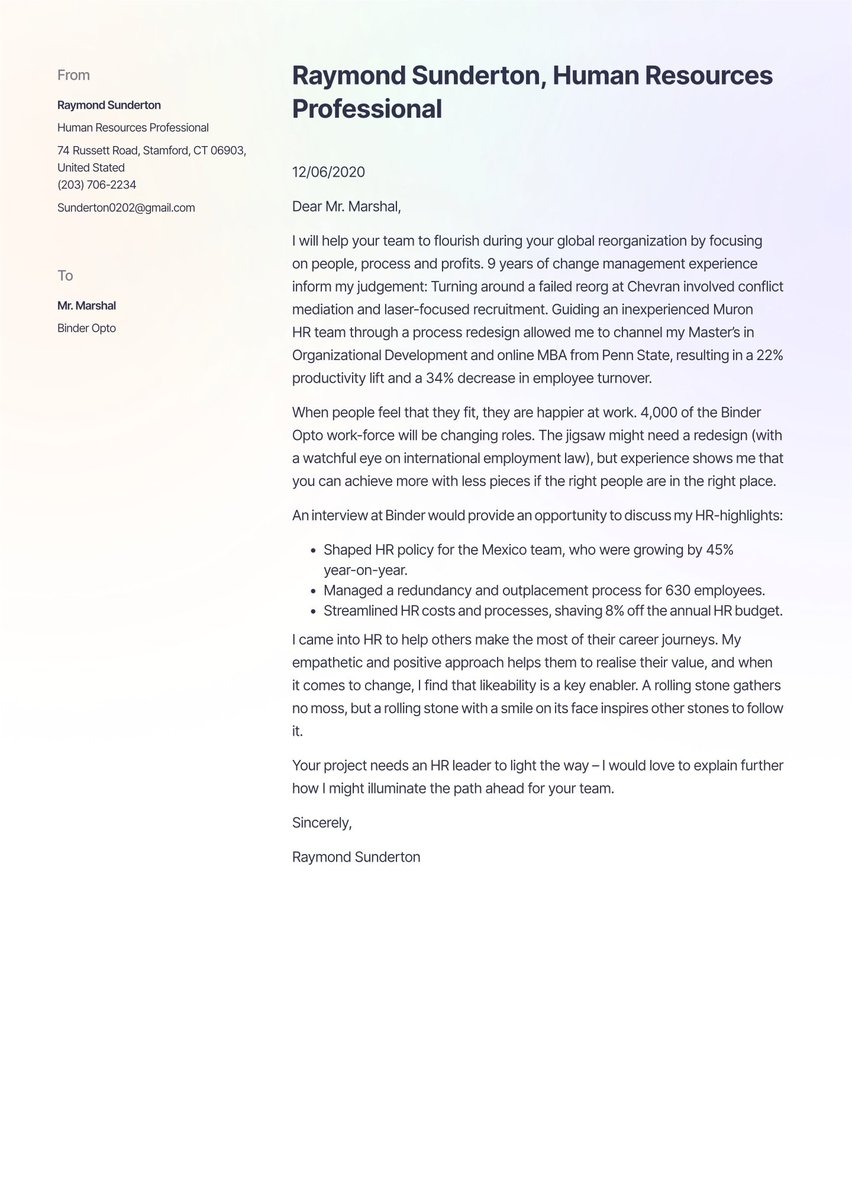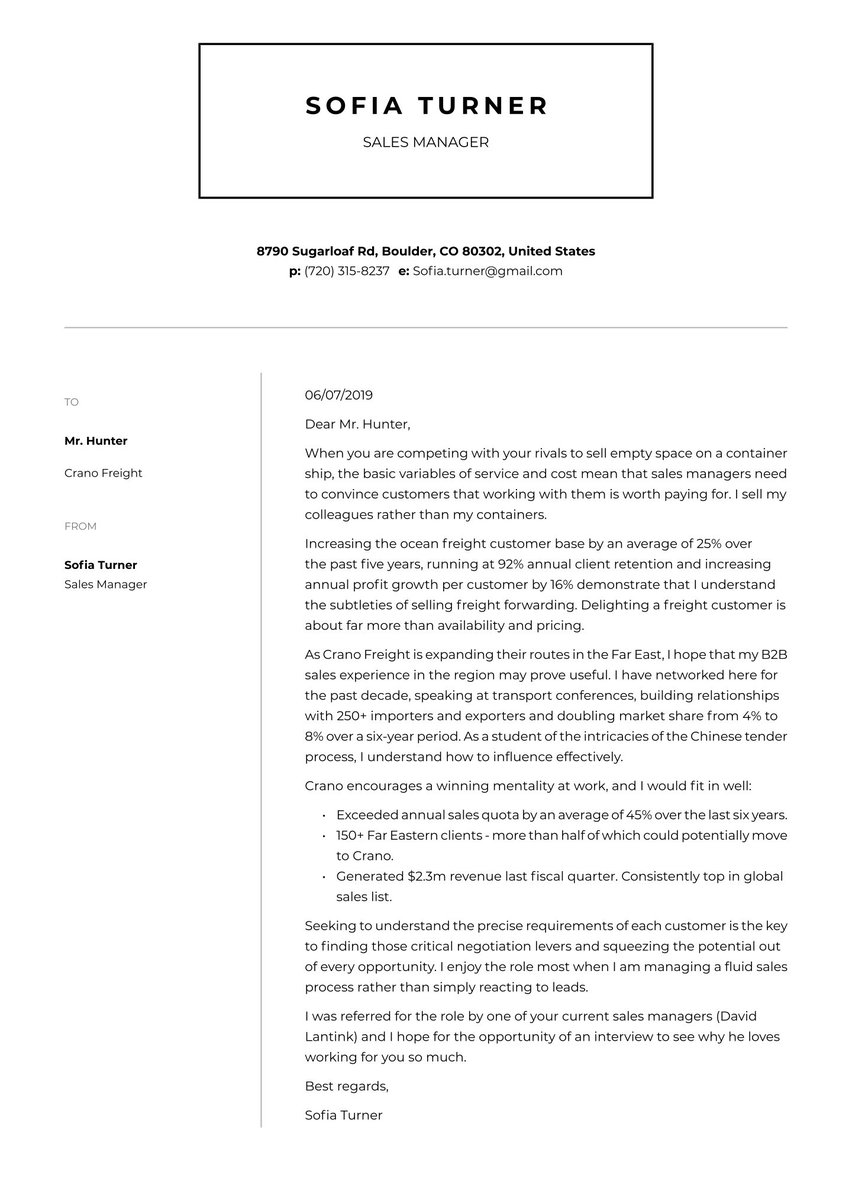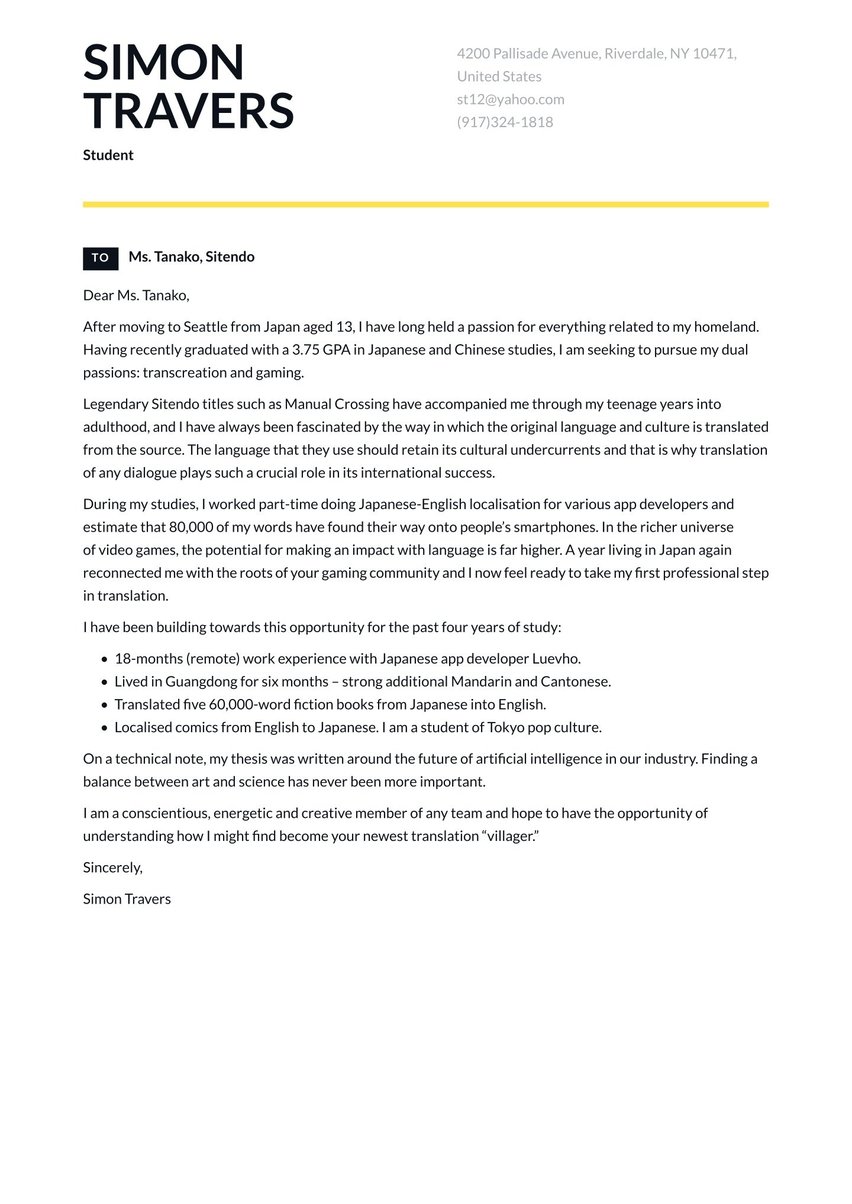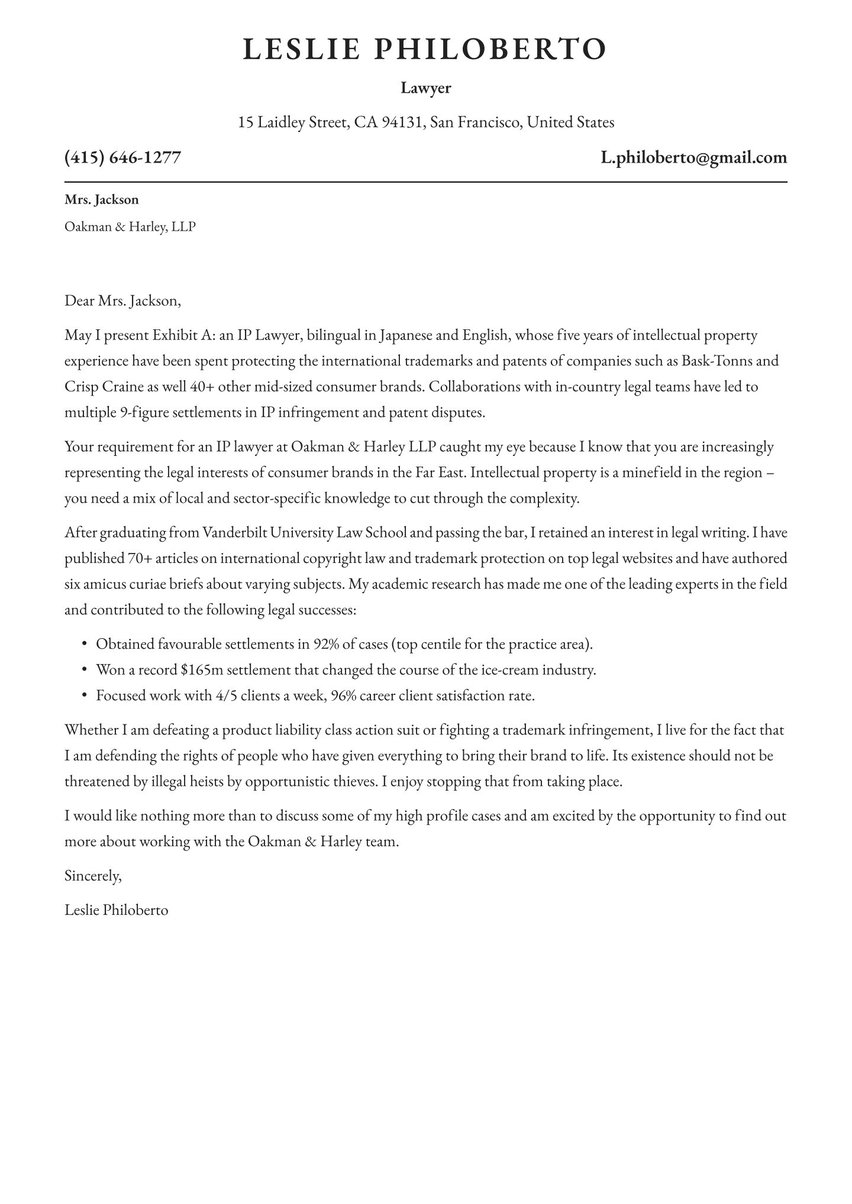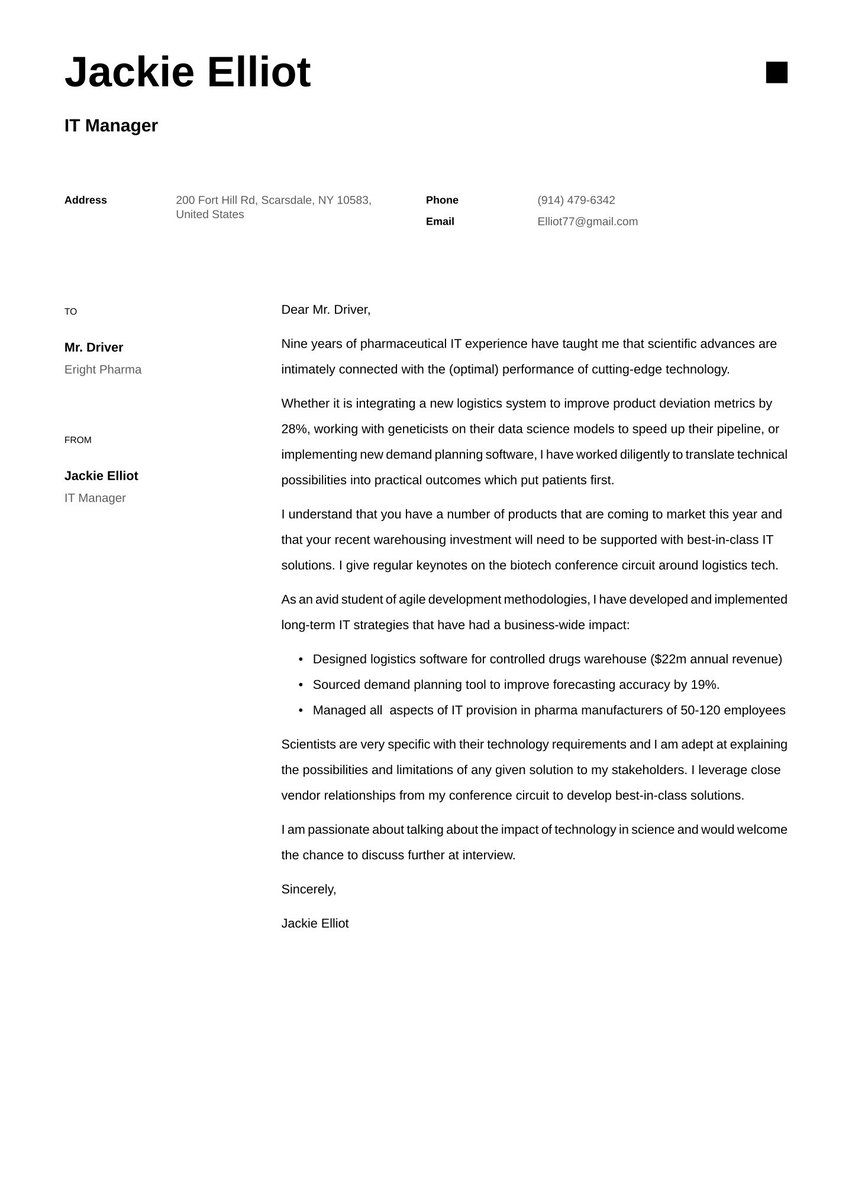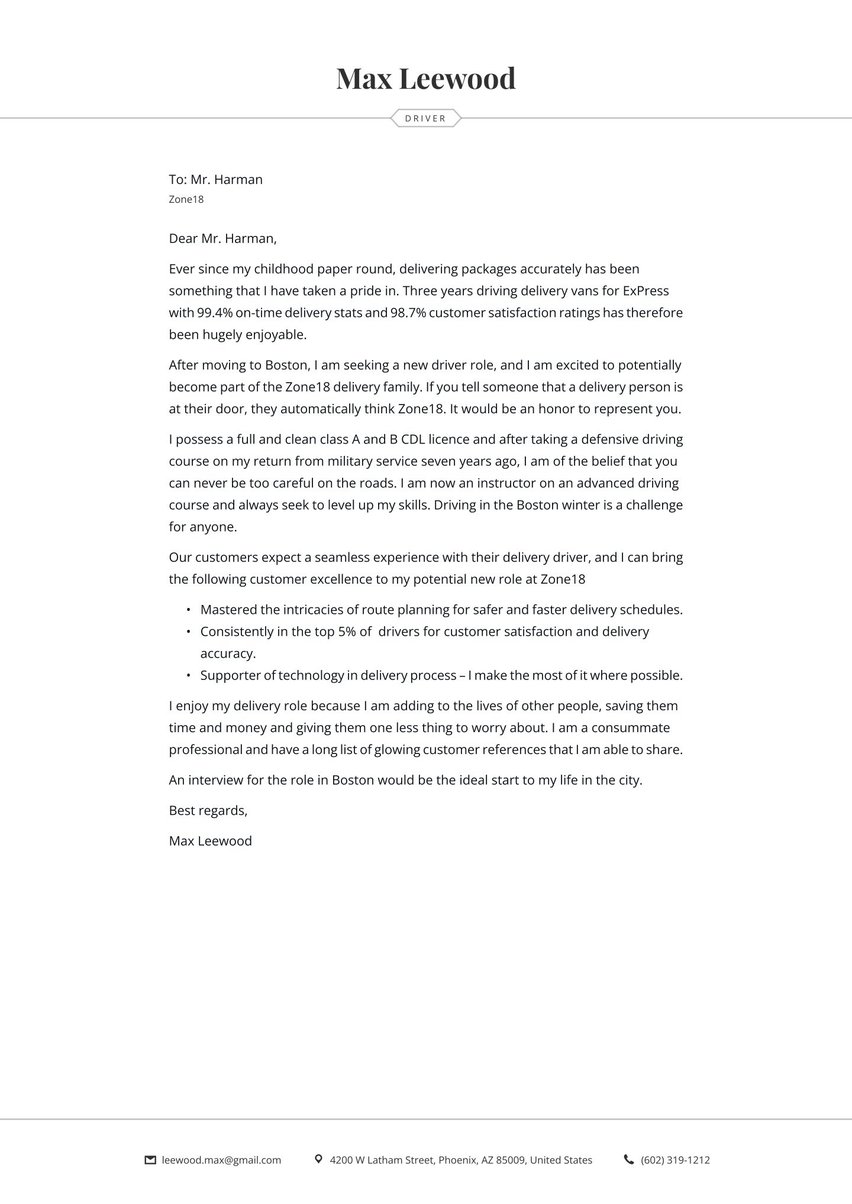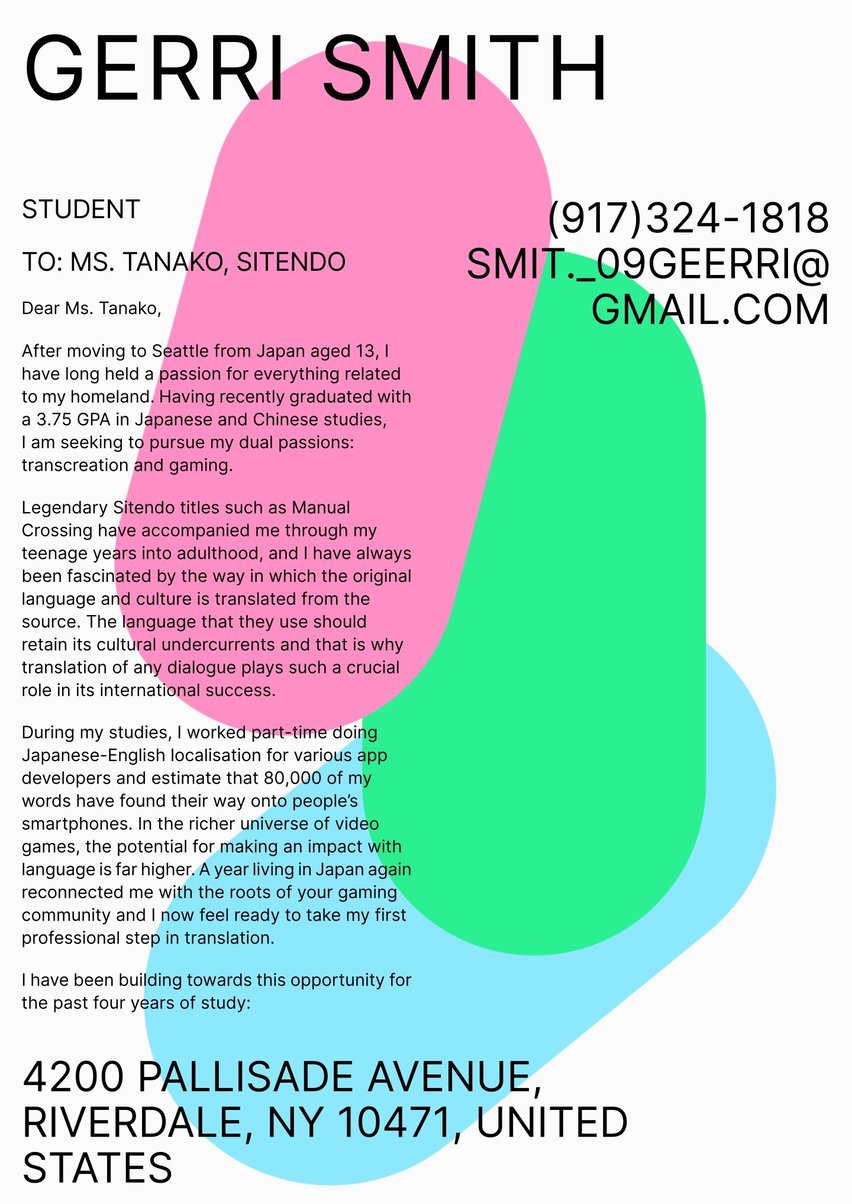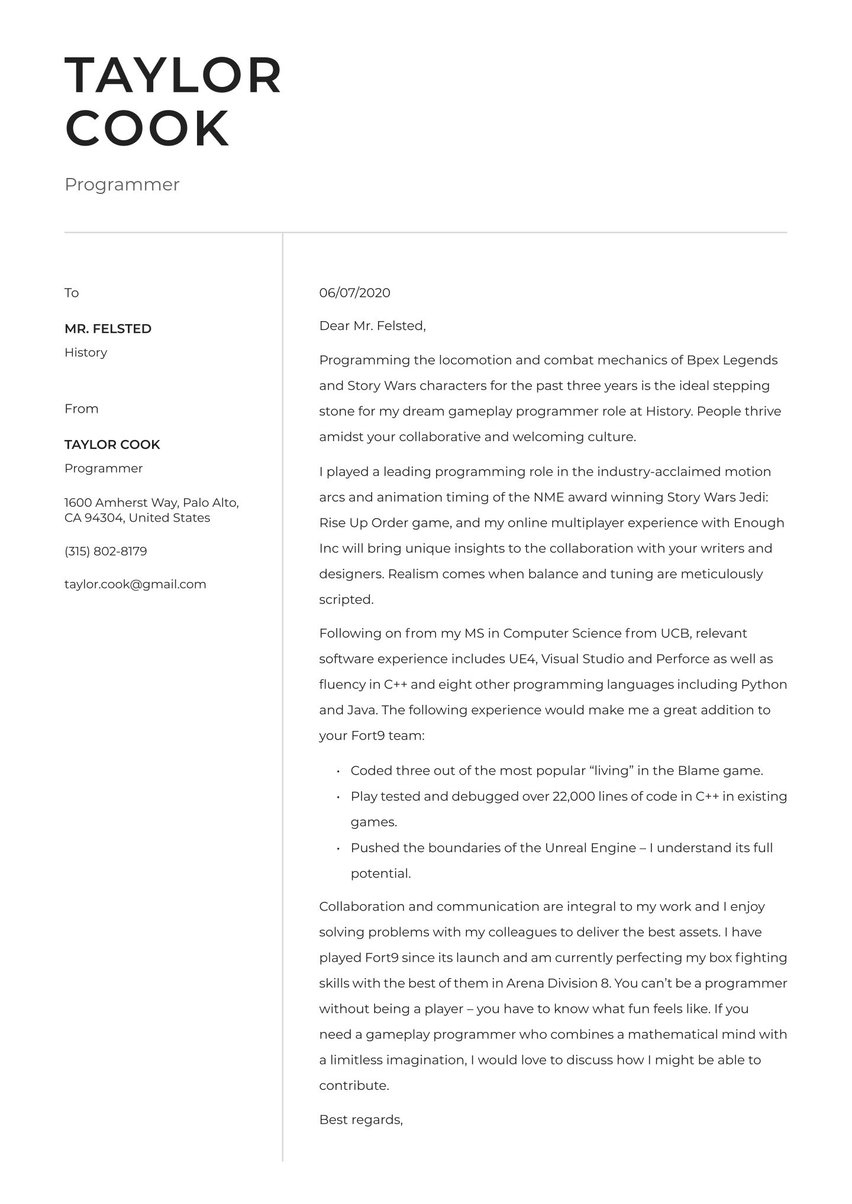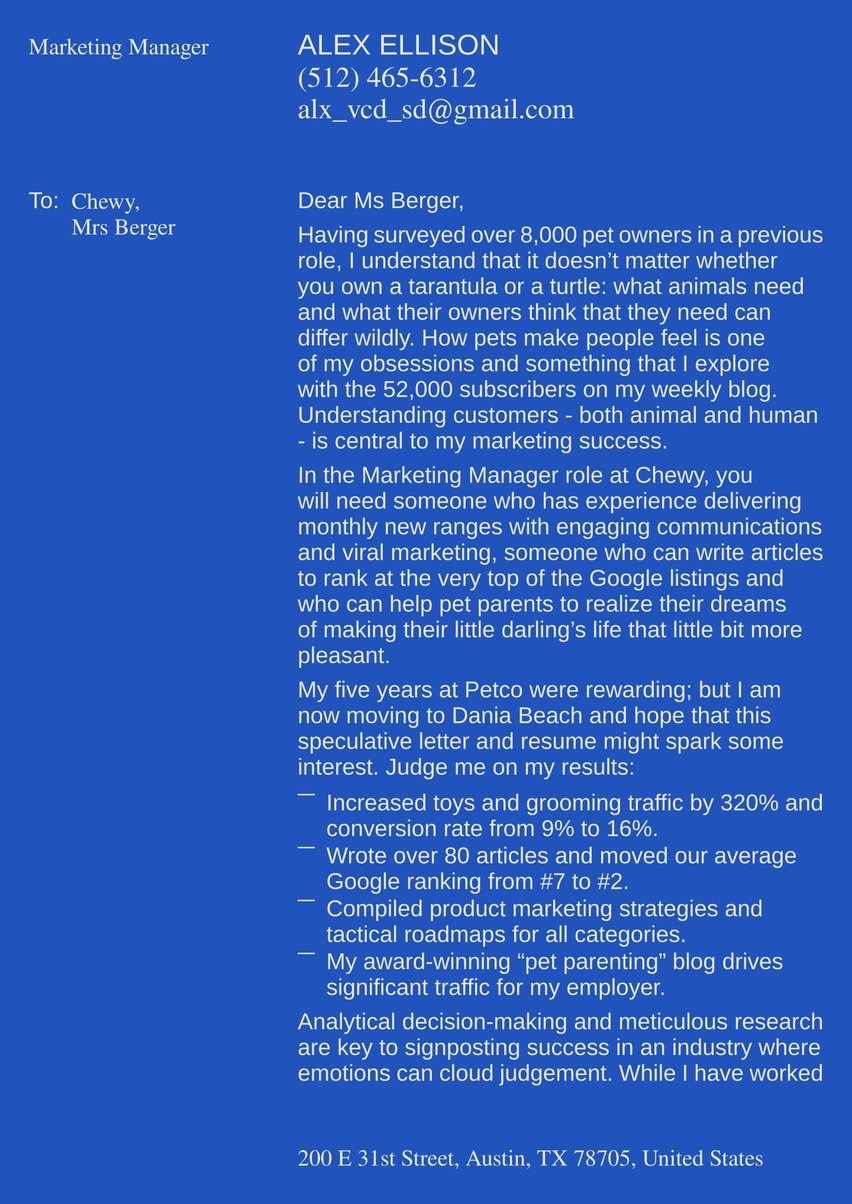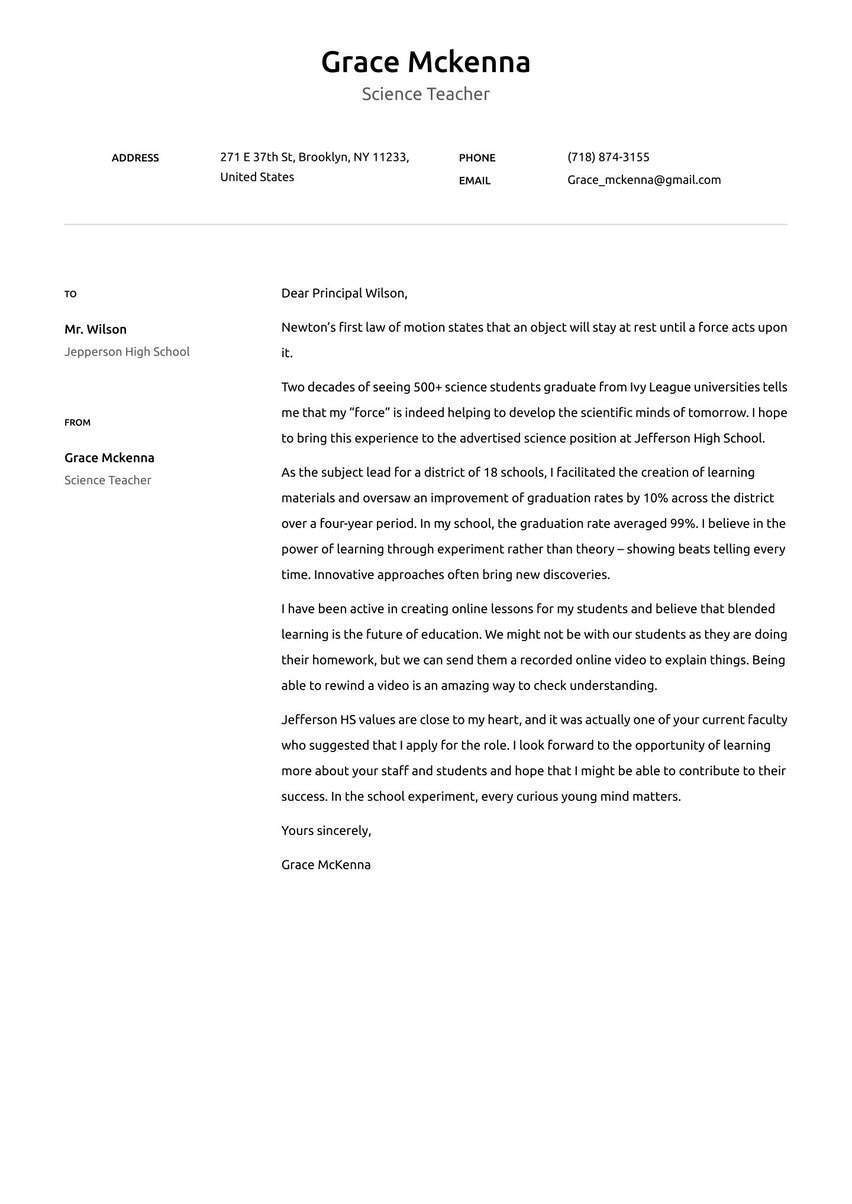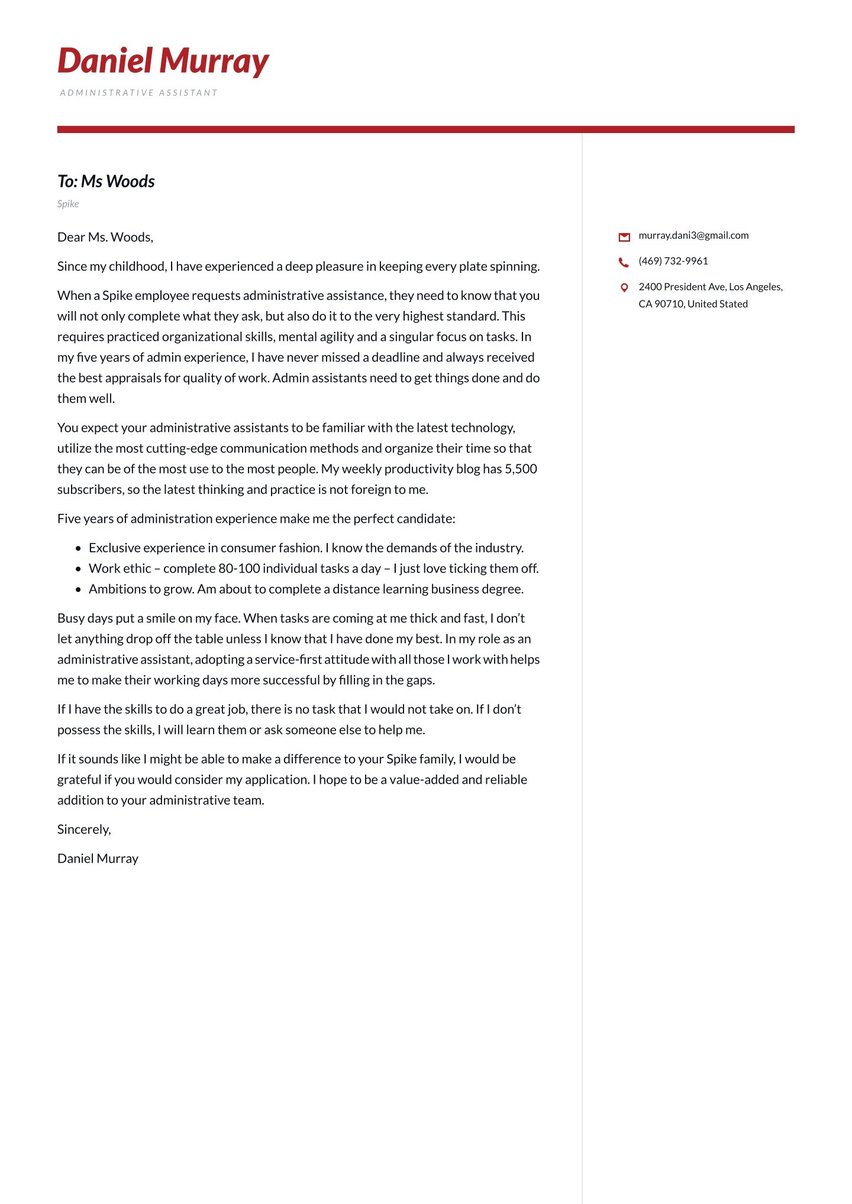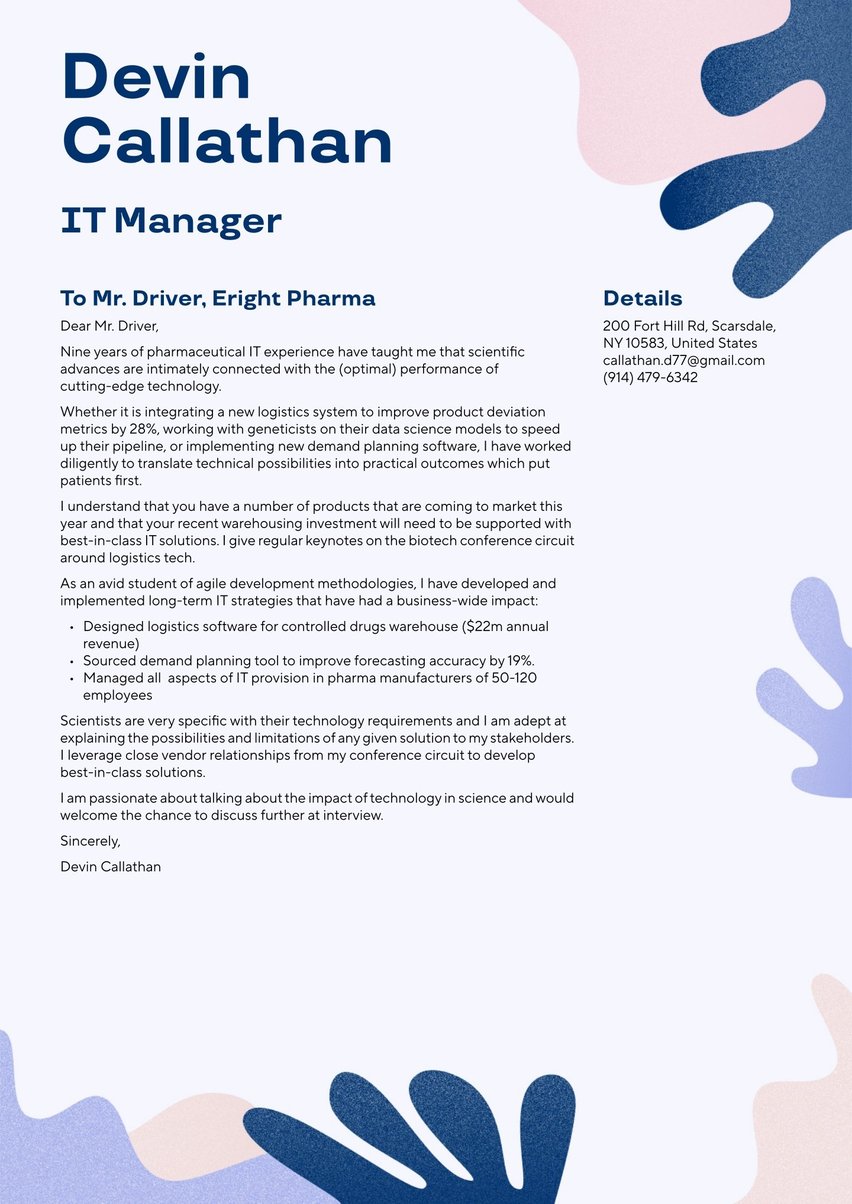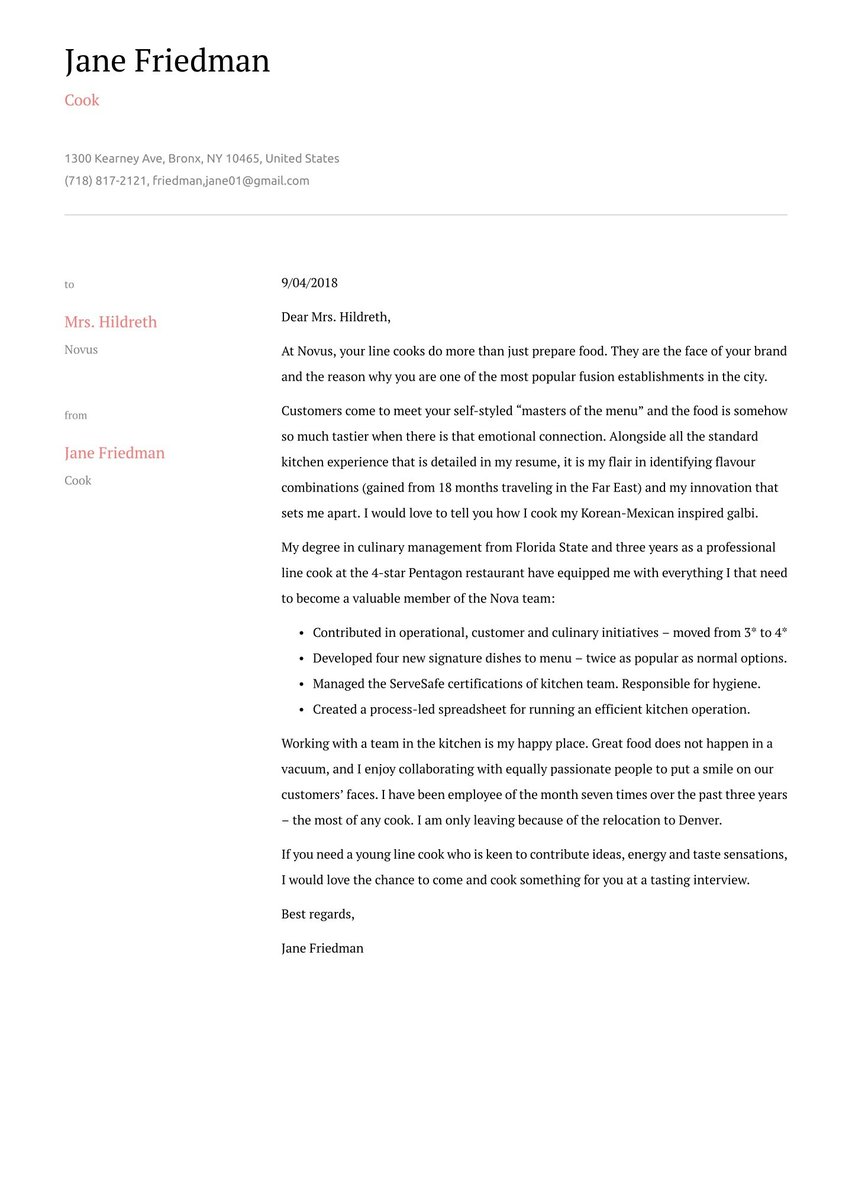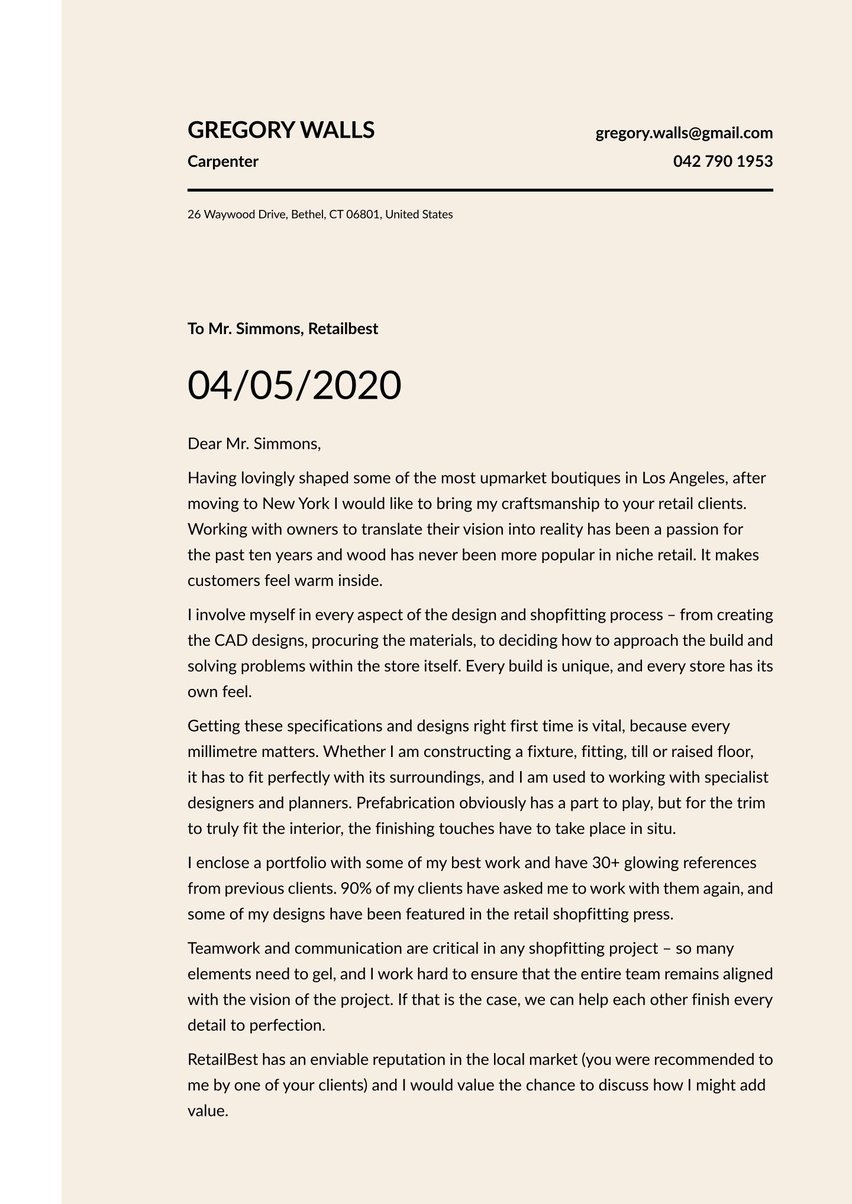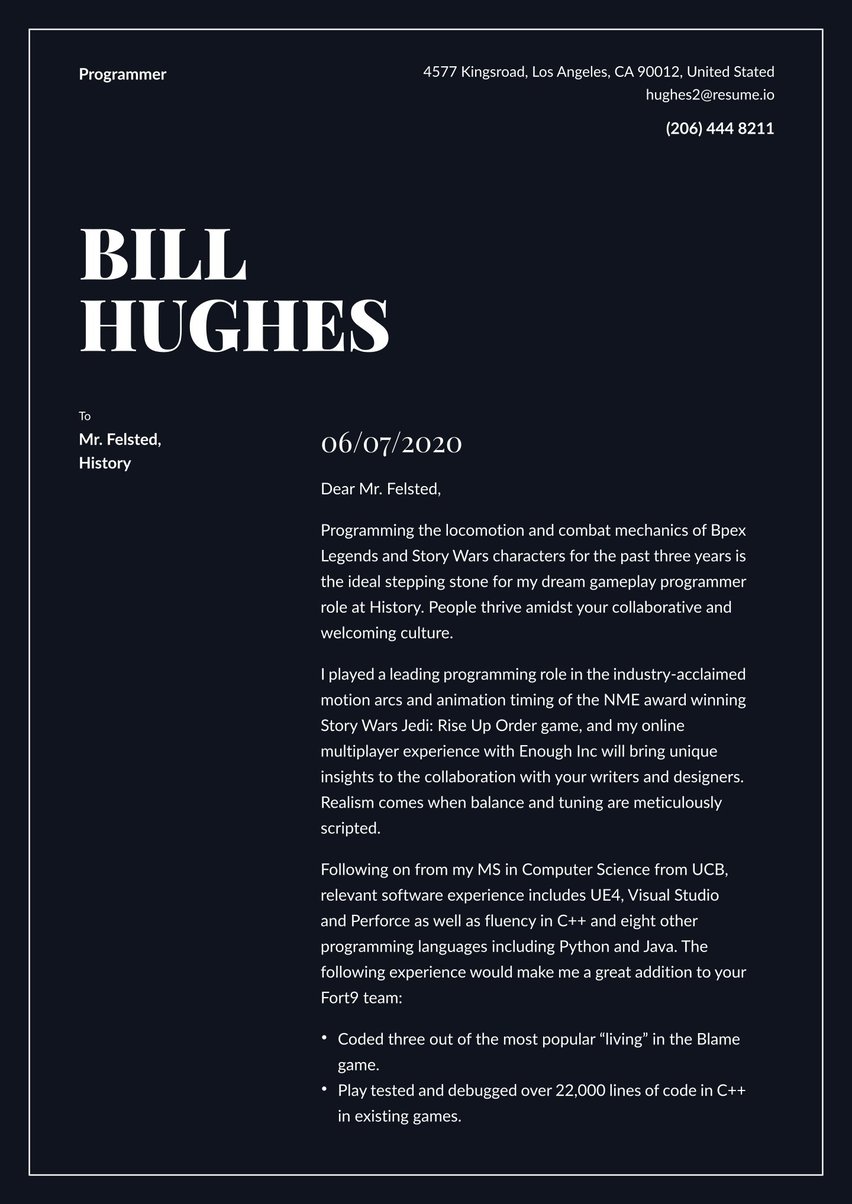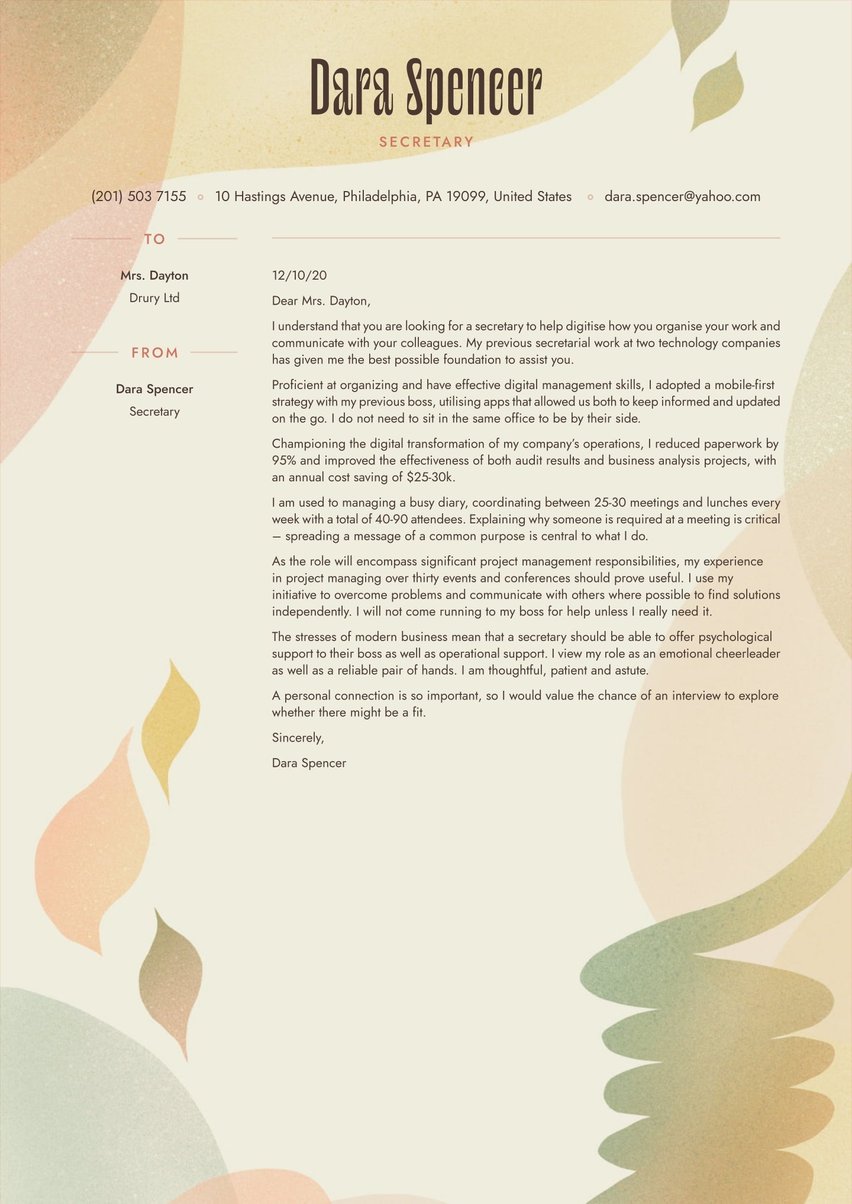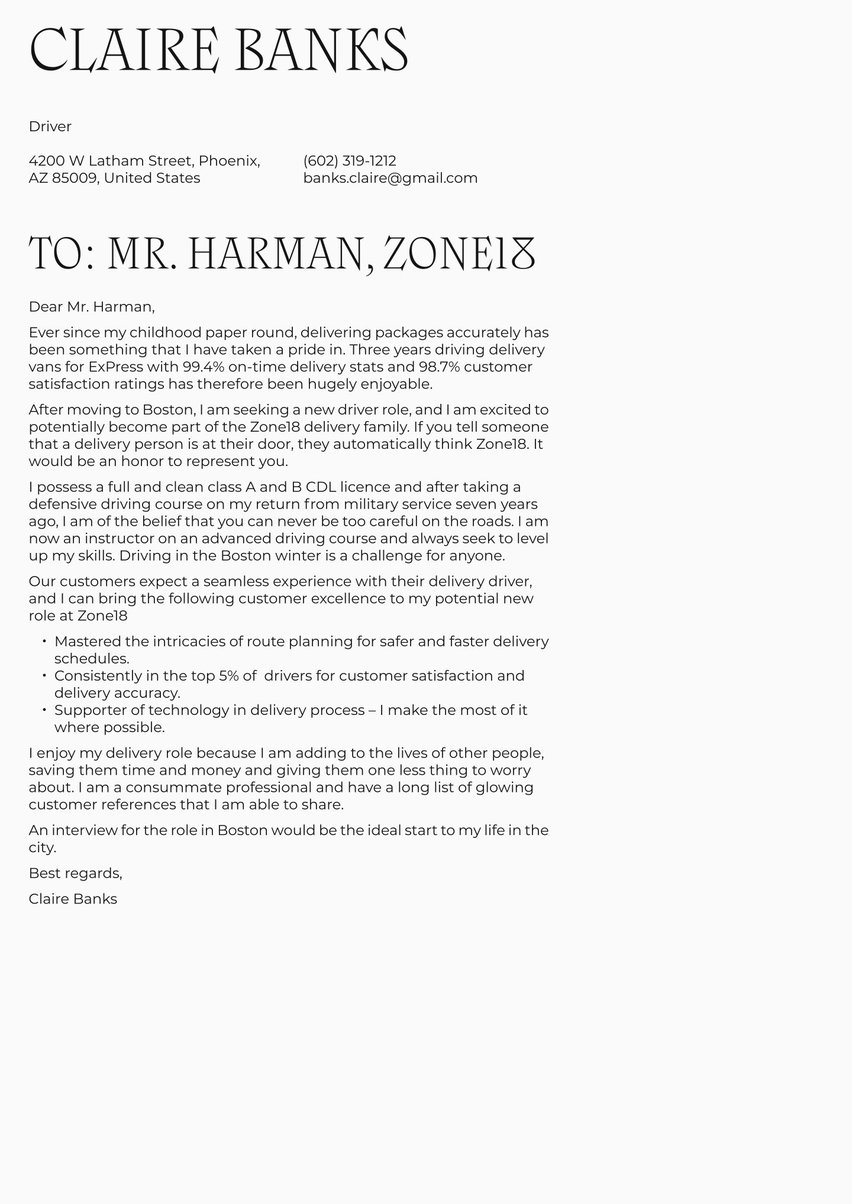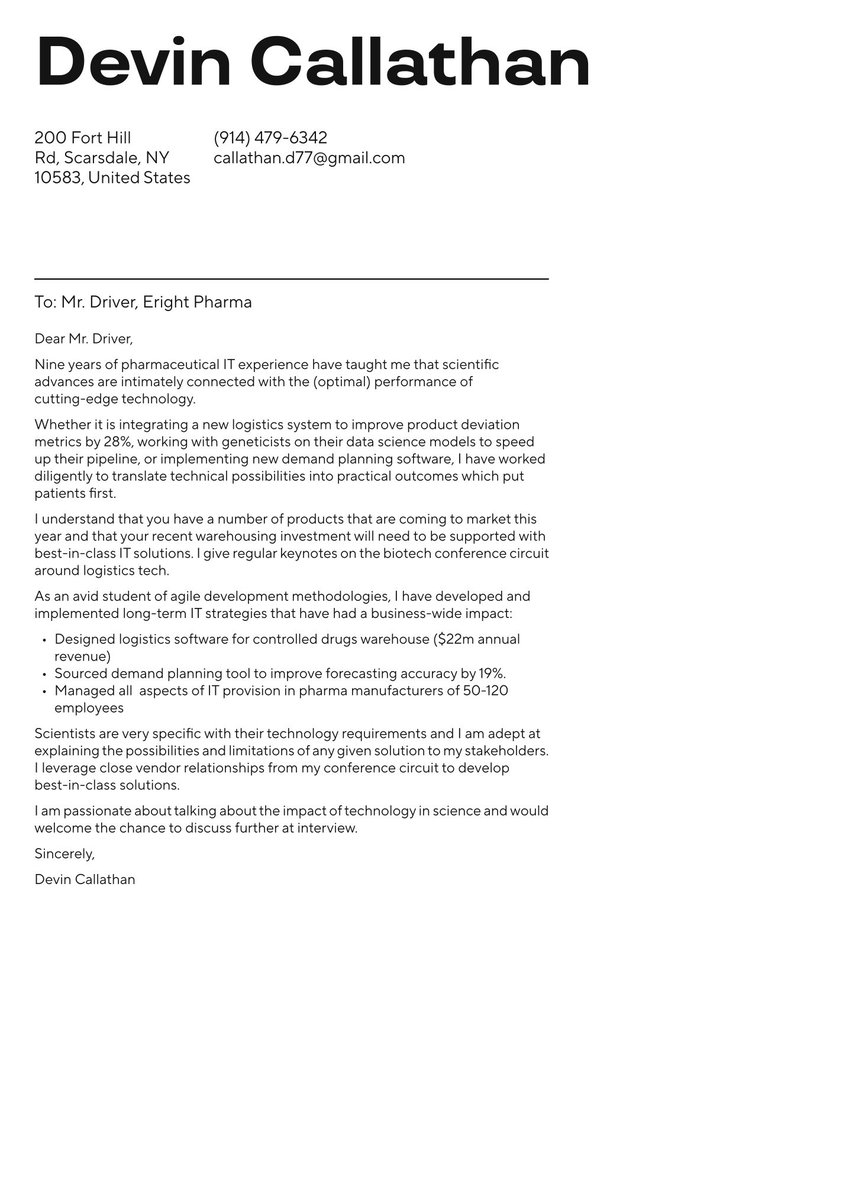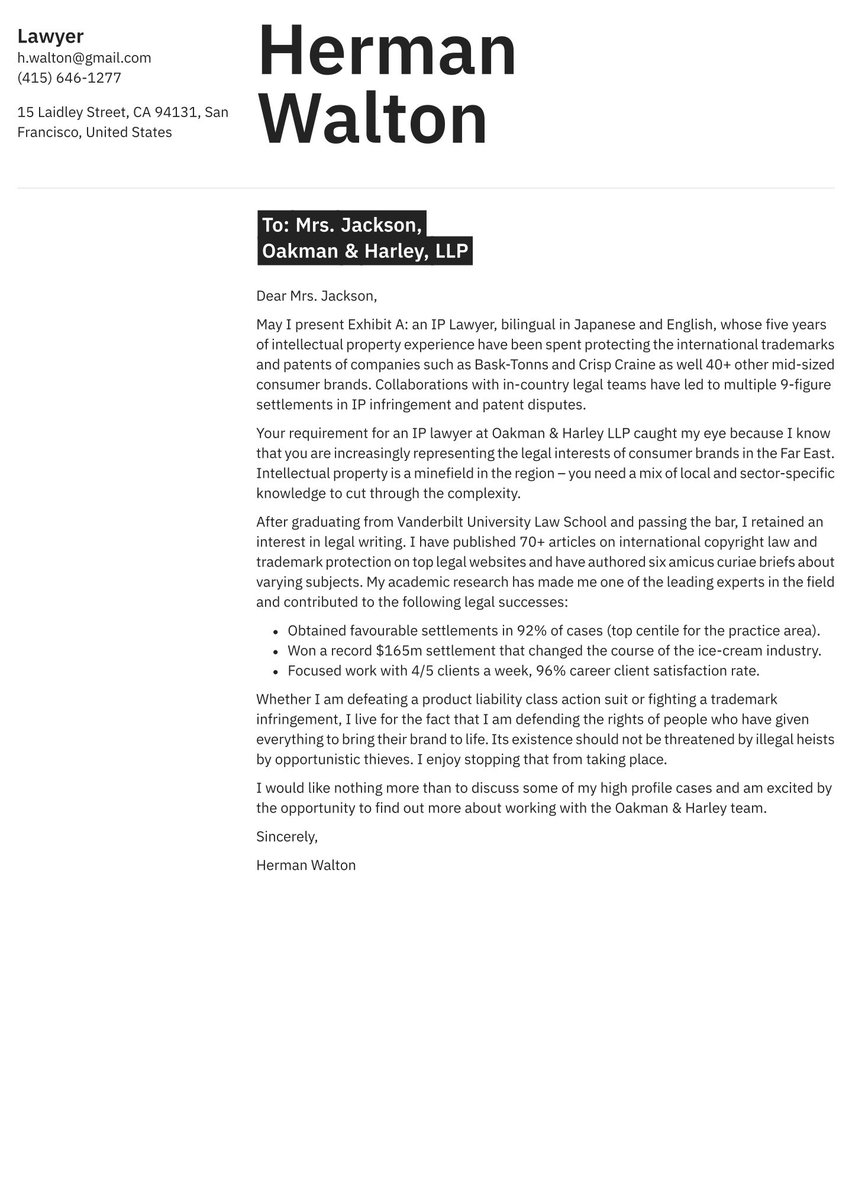Unless you have a rat under your hat who is a master of the culinary arts, you’ll probably have to find your chef job the old-fashioned way. That means you’ll need the simple recipe for an outstanding chef cover letter to pair with your resume.
Chef cover letter examples by experience level
Never fear, we’re here to help you with the practical aspects of getting an amazing restaurant position without the need for magical animated characters! But that’s nothing. You don’t even have to win “Hell’s Kitchen.”
Resume.io has all the ingredients ready with step-by-step preparation tips for a job-winning cover letter. Our resources include a wide selection of occupation-specific writing guides and free cover letter examples. In addition, we offer formatting advice, plus field-tested templates and builder tools to help you create both resumes and cover letters.
This cover letter writing guide, along with an adaptable chef cover letter example, will discuss:
- Why you need a cover letter
- The best format for structuring a chef cover letter
- Advice for each cover letter part: header, greeting, introduction, body and conclusion
- The psychology of writing a persuasive chef cover letter
- Common mistakes found in chef cover letters
For more ideas and inspiration, check out these related cover letter writing guides and examples in the hospitality & catering category:
- Hospitality cover letter sample
- Barista cover letter sample
- Restaurant cover letter sample
- Waitress cover letter sample
- Cleaning job cover letter sample
- Bartender cover letter sample
- Starbucks cover letter sample
- Server cover letter sample
- Hotel Receptionist cover letter sample
- Travel Agent cover letter sample
- Restaurant Manager cover letter sample
- McDonald's cover letter sample
- Pastry Chef cover letter sample
There are very few fields where one’s work may be known so publicly. If you’re the head chef at Jack’s Hash & Mash, literally anybody in the world can come into your restaurant and sample your food. Ultimately, your diners are the critics you need to win over.
If you want to apply for a job down the street at Jill’s Bar & Grill, Jill may already know your work very well. If she hates it, probably the best cover letter in the world can’t save you. But if she knows your restaurant serves great food and you’re in charge, then a good resume and cover letter may be all you need to get you on track for an interview and a job offer.
People sometimes wonder why a cover letter is needed in addition to a resume. After all, a resume covers your relevant job experience, training and other qualifications, and the cover letter addresses many of these same issues.
But let’s talk basic manners. You are, after all, asking for a job — so you have to ask. And you have to ask nicely, professionally and persuasively. This is the function of a cover letter.
A cover letter is a way of establishing a personal connection to a hiring manager. It’s a way of introducing yourself, expressing an interest in a job, and informing an employer about the experience, skills and qualifications that make you an excellent candidate.
Sometimes a chef also needs to be something of a diplomat, and a cover letter is an opportunity to showcase your personality, your passion, your talents for humble yet confident self-promotion.
A cover letter also offers the opportunity to relate anecdotes — short little stories about challenges you’ve faced in the past and how you overcame them. This is something you can’t do in a resume.
Unless you’re specifically asked not to, always include a chef cover letter with your chef resume.
Best format for a chef cover letter
What does a cover letter need to cover?
In most cases, a cover letter should be one page only, ranging from 200 to 400 words depending on your career and experience.
What are the basic components of a cover letter? What do they need to contain and achieve? Let’s take a look.
Here is the preferred structure for a good cover letter and the components it needs to contain:
- Cover letter greeting / salutation
- Introduction
- Body
- Conclusion and call to action
- Sign-off
Some variation may be OK, but it has to include these major ingredients. You can customize it to your taste, but you have to follow the outlines of a basic format.
Now we'll take a closer look at each component of your chef cover letter.
Dear Mr Trunk,
Having spent five years under renowned sushi chef Maru Himura, I started my own journey as a sushi and bento chef at the four-star Ibizian Bashi in 2016, winning plaudits for my fusion menu. No restaurant in town could compete with our supply chain and I will bring my supplier relationships to Sushi Cento.
My biggest achievement there was to redesign the lunchtime set menu to incorporate delivery. We were in a downtown district that was popular with office workers, but demand for delivery was fast outstripping diners.
- Completed a rigorous 5-year apprenticeship under renowned sushi master Chef Saito in Tokyo, acquiring traditional techniques and knowledge to create authentic Edo-style sushi.
- Spearheaded the menu creation at [Restaurant Name], introducing a fusion sushi line which increased sales by 20% and garnered media attention from top culinary magazines like "Gourmet Traveler" and "Bon Appétit."
- Attended annual sushi seminars and workshops in Japan to stay updated with global trends, subsequently introducing modern sushi concepts at [Restaurant Name], leading to a 10% increase in footfall from a younger demographic.
Different menu choices were being made and we decided to let out delivery menu dictate our restaurant offering. This resulted in a 29% overall increase in sales and 15% uplift in operating profit as we had more availability of tables and decreased delivery costs per order with larger customers.
I take a pride in exceeding customer expectations and our reviews on Trip Adviser put us in the top 10% of restaurants in the city (out of 400 establishments). I enclose a selection of restaurant critic reviews.
I look forward to having the opportunity to come in and prepare something for you to showcase my subtle skills. Japanese cooking is my passion.
Sincerely,
William Turner
Cover letter header
The header of your cover letter serves both a practical and esthetic purpose. It should be eye-catching in the most attractive and reader-friendly sense, without being detracting from the letter itself. It should be memorable in distinguishing who wrote the letter with contact information for employers to easily get in touch.
The cover letter header should contain your full name, email and mobile number. These contact details should be repeated from your resume. There is no need to include your full home address - there are data protection issues here. The inside address of the employer is also not required - this is an old-fashioned waste of space.
Align document styles
Probably you wouldn’t serve a meal to a pair of diners using different types of plates, glasses and flatware. You want a coherent, organized look to your table, showing you have put some thought into the presentation.
Follow the same instincts in preparing both your cover letter and resume. They should have a similar look, making it obvious that they were prepared to be paired.
Use the same fonts, font sizes and formatting styles in creating your resume and cover letter. The header should be very similar, if not identical, on both of these documents.
This will give you a visual brand, a style, and it will demonstrate that you have a feel for presentation.
Goal of the cover letter header: Distinguish yourself from other job applicants with high regard for visual brand consistency and quality of presentation.
Cover letter greeting
This is the line in your letter that says, “Dear,” usually followed by a Mr. or Ms, a surname and a colon. There’s no need to overthink this time-honored way to write the salutation of a business letter.
If you happen to know the person you’re writing to, of course, that may be different. If you’re friends with the proprietor of Jill’s Bar & Grill, she might find it unnecessarily formal if you address her as anything but “Dear Jill.”
But beware of being too casual in writing a letter seeking a job to someone you don’t know. Other people may read the cover letter and you do not want to be accused of nepotism.
The power of using names and direct greetings.
Always try to write a cover letter to a named individual — the actual person in charge of hiring at the company you’re targeting. Neuroscience has shown in actual studies the powerful impact people have to their own names. We are social and emotional creatures first and foremost. Remember that any professional appeal (such as a cover letter) has an underlying psychological connection.
If you’re responding to a help-wanted ad that doesn’t list a contact, it’s often worth calling to find out the name of the person responsible. Granted you respect peoples’ and companies’ boundaries, this is a very positive and productive practice: connecting with actual humans before the job interview itself.
From your end, that provides reassurance that your letter isn’t going to be buried on the wrong person’s desk. And from the recipient’s end, this shows that you pay attention to detail and you’re not just blindly firing off cover letters to any restaurant out there.
Distinctions are often drawn between business letters and personal letters, but it’s important to understand that sometimes a business letter should also be personal, and the cover letter is a great case in point.
The main objective of this exercise is to establish a personal connection to somebody who has the power to offer you a job. If you don’t even know that person’s name, this will be tough to pull off.
Goal of the cover letter greeting: Start off on a professional note by making a direct personal connection with the employer that strikes the right tone.
Dear Mr Trunk,
Cover letter introduction
After all this prep, it’s time to serve something up. Steering clear of clichés, HR-speak and fluff, you want to write a provocative and compelling opening statement that virtually compels the reader to keep reading.
Ideally you would include some reference to your qualifications — for example, you might start by saying “After four years as a sous chef at the famous Cajun Nation in New Orleans.…”
It’s important to find the right tone of voice to use in your cover letter. You should take into account the tone that your target uses in addressing its audience on its website and other platforms (such as social media). Whether that tone is highly formal or disarmingly casual, you should strive to speak in a similar language.
Remember that you want to exude both competence and confidence — you do have to sell yourself — but arrogance is always a turnoff.
Goal of the cover letter introduction: Whet the appetite of hiring managers with a taste of what will follow when they keep reading.
Having spent five years under renowned sushi chef Maru Himura, I started my own journey as a sushi and bento chef at the four-star Ibizian Bashi in 2016, winning plaudits for my fusion menu. No restaurant in town could compete with our supply chain and I will bring my supplier relationships to Sushi Cento.
Cover letter body
The central two or three paragraphs of your letter must contain all the essential information about your experience, training, skills and other qualifications for the job.
Experience is usually the dominant element of the body of a cover letter. If you have extensive experience at good restaurants, play this up for all it’s worth.
Don’t just say where you worked and for how long, but describe what you did at each job. Use anecdotes to tell stories about special challenges you faced, for example, and how you overcame them. Wherever possible, use facts and figures, like the number of diners you cooked for during an average shift, the restaurant’s nightly gross or other relevant information.
If you’ve gone to school to study the culinary arts, or you have other relevant training, certifications or awards, this is also the place to mention that.
You may also be aware of a specific need at the eatery you’re targeting, and you may be able to make an argument that your special skills will fill a need there. Always remember that a cover letter should not be about how you deserve a job, but about the needs of the employer.
Aim of the cover letter body: Highlight your most relevant accomplishments in a relatable way, so the employer can envision how the restaurant would benefit if you are hired.
My biggest achievement there was to redesign the lunchtime set menu to incorporate delivery. We were in a downtown district that was popular with office workers, but demand for delivery was fast outstripping diners.
- Completed a rigorous 5-year apprenticeship under renowned sushi master Chef Saito in Tokyo, acquiring traditional techniques and knowledge to create authentic Edo-style sushi.
- Spearheaded the menu creation at [Restaurant Name], introducing a fusion sushi line which increased sales by 20% and garnered media attention from top culinary magazines like "Gourmet Traveler" and "Bon Appétit."
- Attended annual sushi seminars and workshops in Japan to stay updated with global trends, subsequently introducing modern sushi concepts at [Restaurant Name], leading to a 10% increase in footfall from a younger demographic.
Different menu choices were being made and we decided to let out delivery menu dictate our restaurant offering. This resulted in a 29% overall increase in sales and 15% uplift in operating profit as we had more availability of tables and decreased delivery costs per order with larger customers.
I take a pride in exceeding customer expectations and our reviews on Trip Adviser put us in the top 10% of restaurants in the city (out of 400 establishments). I enclose a selection of restaurant critic reviews.
Cover letter conclusion and call to action
In your final paragraph, bring your pitch to a satisfying conclusion with a call for action. That means you should say something about how you eagerly await a reply, how you would be delighted to show up for an interview, or perhaps even that you may be going to the restaurant soon just to eat, and you’d love to say hello to the owner if s/he has time.
Try to give your reader no excuse to set your letter aside. Plant the thought that some response would be appropriate and that you are looking forward to it.
Goal of the cover letter closing: End on a positive, self-assured note with a call to action that compels the restaurant owner to respond and meet with you.
Cover letter sign-off
Close by saying “Sincerely,” “Best regards” or the equivalent, then add a space and type your name. You can also add a digital signature if you like, or if you’re planning on sending a printed copy, you should always sign it.
I look forward to having the opportunity to come in and prepare something for you to showcase my subtle skills. Japanese cooking is my passion.
Sincerely,
William Turner
Cover letter design and formatting: an eye for presentation
Here are some basic guidelines on how to format your cover letter so that it looks as good as it reads.
- Fonts: Use a familiar, easy-to-read font, nothing exotic, avant-garde or splashy.
- Font size: Try for 12-point type, and if your letter won’t fit on one page, you can go as low as 10 points, but no lower. Most first drafts are too wordy, so always try to cut your text before reducing your font size.
- Text alignment: All of your body text should be aligned left, not justified from margin to margin.
- Paragraphs: Should be un-indented but should all have a space between them, and should never be too long. Give your reader some breathing space.
- Margins: Use a one-inch margin on the left, right, top and bottom of your letter.
- Save as PDF: If submitting a resume and cover letter electronically, always save them as PDFs and attach them unless you have a good reason not to. A PDF will preserve your formatting so that the letter you wrote on your device looks the same on anyone else’s device.
- Use a professional template: The surest way to avoid any formatting fails is to use a professionally designed cover letter template like those we offer at resume.io. We’ve done all the formatting for you — all you have to do is write the letter.
Review the free cover letter templates at resume.io, find a style you like, and start filling in your own information. Our cover letter builder offers pre-generated phrases, a diligent spell-checker and much more. Forget the long and stressful process of writing resumes and cover letters. Resume.io makes the most difficult things quick and easy with the most advanced online tools!
The secret sauce — writing psychology
Ultimately a cover letter must appeal to someone else’s palate, not yours, and so you have to try to imagine yourself behind the reading glasses of the recipient.
One way of looking at this: Don’t write the letter you want to write. Write the letter you want the other person to receive.
Study your target. Learn everything you can about the place where you want to work. Find out what this kitchen needs, identify who is in charge, and send a carefully crafted letter suggesting how your contribution would ultimately improve the dining experience of the guests.
If you received this letter out of the blue, would you want to meet the person who wrote it? Would you want to invite that person to your office for an interview? Would you want to consider the possibility of working alongside this person for years to come?
As we’ve mentioned, arrogance is never attractive, and nobody wants to hire somebody they don’t like. But confidence backed by competence, with a little friendliness thrown into the mix, makes a winning combination with most people.
Try to write a cover letter that makes the reader say: “I have to meet this person.”
Common cover letter mistakes
Here are some common mistakes people make in writing cover letters:
- Misspellings and typos: If you dashed this letter off so fast you didn’t even have time to look it over — and if this led to obvious errors in your work — then is this also how you run a kitchen?
- Bad presentation: Nobody wants to read a letter with an 8-point type in a weird font with tiny margins and no paragraph breaks. If your letter shows no sense of style or talent for design or presentation, that will be a turnoff.
- Irrelevant issues: If you have a passion for adopting labradoodles, we celebrate your hobby, but what we really want in this one-page letter is relevant information about what makes you a great cook.
- One size fits all: Identical copy-paste cover letters that are sent to multiple potential employers will do more harm than good. Study each person you write to, and make every letter unique.
Key takeaways
- Analysts project healthy job growth for chefs, but the global coronavirus pandemic has presented serious challenges to the restaurant industry.
- Any chef seeking employment needs a resume and a cover letter, and in fact needs to be prepared to write a different cover letter to each prospective employer.
- Write a cover letter with the proper structure, and you’ll know you included everything that was important and left out everything that wasn’t.
- Presentation matters, so follow some basic formatting advice to make sure your letter looks as good as it reads.
- Try to get inside the mind of the person you’re writing to, and write the letter you want that person to receive.
- Resolve structure and formatting issues by using a professional template.
Go get your dream job today!

